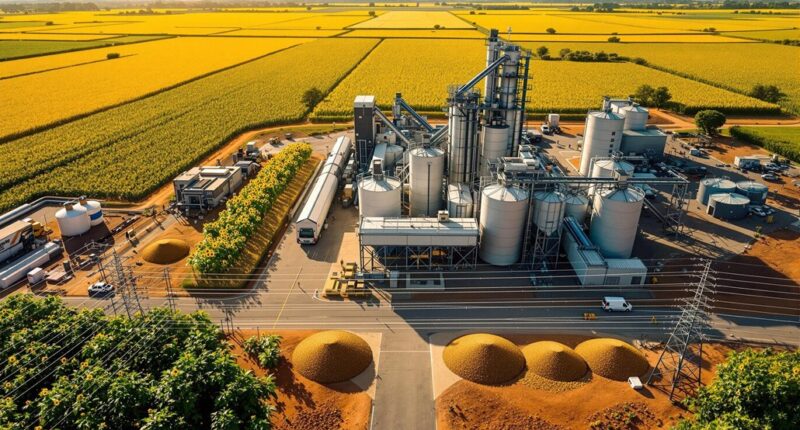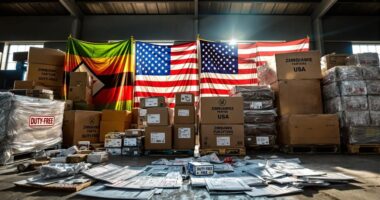South Africa’s oilseed industry faces a critical bottleneck. Processing capacity has maxed out at 2.7 million tonnes annually, while production soars to 3.6 million tonnes in the 2023-24 season. This gap forces a record 800,000 tonnes into export markets, primarily to China. Power shortages, crumbling infrastructure, and high energy costs prevent processing expansion. Without major investments, South Africa’s position as a net exporter will continue as domestic facilities can’t absorb the growing surplus.
South Africa’s oilseed industry has hit a ceiling, with processing capacity maxed out at 2.7 million tonnes annually. The nation’s processors crushed 2.6 million tonnes in the 2022-23 season and expect similar levels through 2024-25. This capacity combines dedicated soybean, sunflowerseed, and flexible crushing plants across the country.
The ability to expand processing is severely limited by several challenges. Unprecedented power shortages, rising energy costs, and high inflation rates have deterred new investments in processing facilities. These factors have created a significant gap between what South Africa produces and what it can process domestically.
Production has surged well beyond processing capacity. The 2023-24 season saw 3.6 million tonnes of oilseeds produced, with soybeans accounting for 2.76 million tonnes and sunflowerseed contributing 810,000 tonnes. This production-processing gap means South Africa must export a substantial portion of its oilseed harvest.
South Africa’s oilseed production has outpaced processing capabilities, forcing exports of surplus harvest to international markets.
Export volumes have grown dramatically. A record 800,000 tonnes of oilseeds are projected for export in 2023-24, with soybeans making up 750,000 tonnes and sunflowerseed accounting for 50,000 tonnes. This represents a remarkable shift as South Africa has transitioned from being primarily an importer to a net exporter of oilseeds. China’s approval of import protocols in 2022 opened a major new market for South African soybeans. Other key export destinations include Malaysia, Mozambique, and Thailand.
Weather has impacted recent export patterns. Drought conditions caused exports to drop by 90% before rebounding to 380,000 tonnes in the 2024-25 forecast. Despite these fluctuations, exports remain essential due to the structural surplus created by limited domestic processing capacity.
Farmers have dramatically increased oilseed plantings over the past two decades. Soybeans now dominate the landscape, accounting for 63% of all oilseed plantings with 1.8 million hectares. The crop has seen a ninefold expansion from just 135,000 hectares twenty years ago to 1.2 million hectares in 2023-24. Sunflowerseed maintains a stable 30% share with 600,000 hectares.
Infrastructure problems extend beyond electricity shortages. Deteriorating roads, rail networks, and water systems add significant costs to processors and exporters. High utility costs and rising interest rates further squeeze margins across the industry. The country’s oilseed meal production remains consistently high despite these challenges, maintaining record levels of 1.8 million tonnes. Policy uncertainty has also slowed agricultural sector development.
Despite these challenges, South Africa maintains sufficient stocks to guarantee full utilization of existing processing capacity. However, flat per capita consumption of oils and meals limits domestic growth potential.
Unless significant investments address power and infrastructure constraints, South Africa’s oilseed industry will likely continue exporting growing surpluses rather than capturing additional value through domestic processing.
Conclusion
South Africa’s oilseed industry faces a significant challenge as processing capacity remains capped at 2.7 million tons despite growing production. This bottleneck creates a surplus that must be exported as raw materials rather than value-added products. Industry leaders are calling for increased investment in processing infrastructure to capture more economic value domestically and reduce reliance on imports of processed oilseed products.








